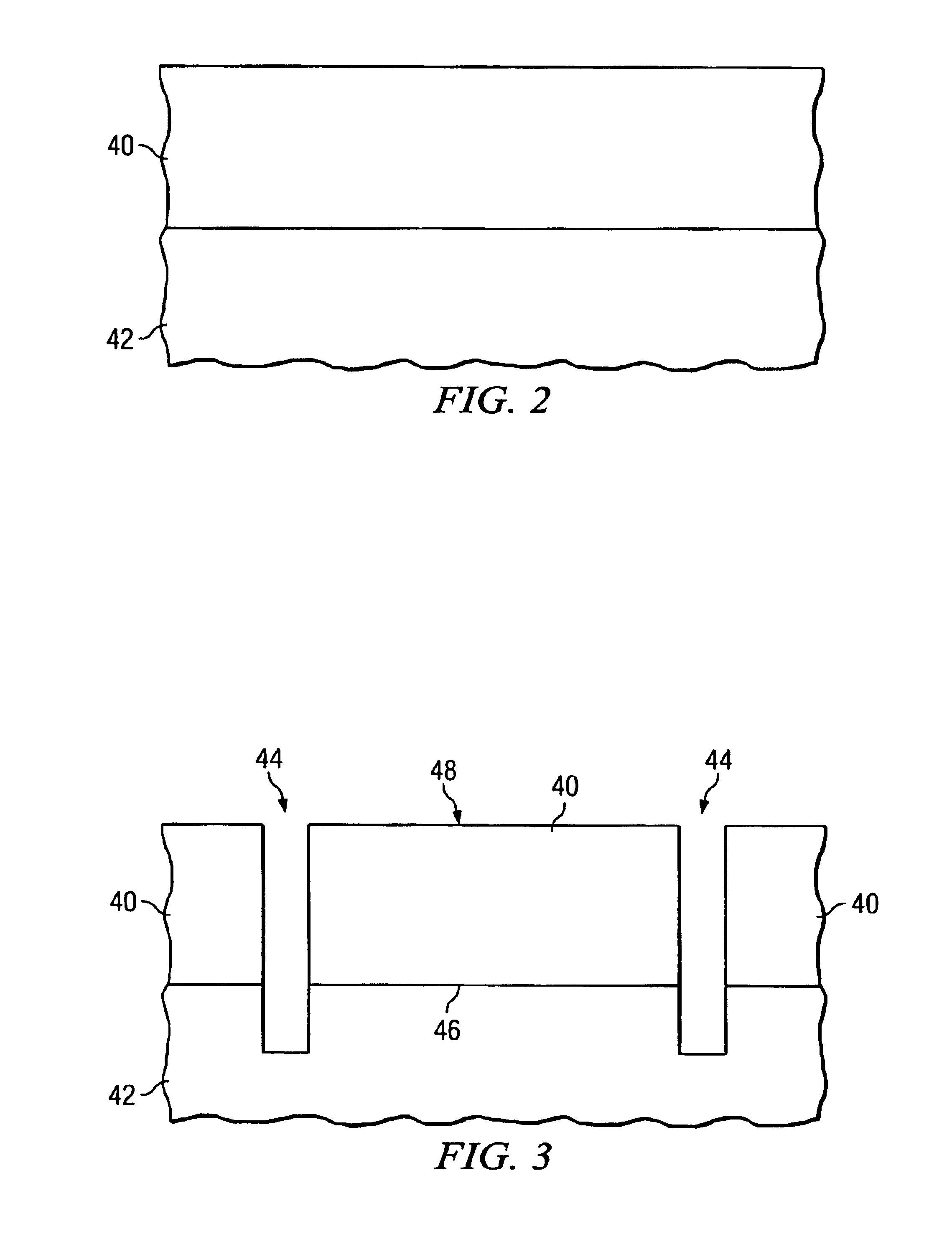Strained silicon structure
a technology of strained silicon and crystalline silicon, applied in the direction of transistors, semiconductor devices, electrical equipment, etc., can solve the problems of significant challenges, high defect density may present a significant barrier for the production of integrated circuits using such substrates, and relaxed crystalline silicon is said to be lattice-mismatched with respect to relaxed crystalline sig
- Summary
- Abstract
- Description
- Claims
- Application Information
AI Technical Summary
Benefits of technology
Problems solved by technology
Method used
Image
Examples
Embodiment Construction
[0013]Referring now to the drawings, wherein like reference numbers are used herein to designate like elements throughout the various views, illustrative embodiments of the present invention are shown and described. The figures are not necessarily drawn to scale, and in some instances the drawings have been exaggerated and / or simplified in places for illustrative purposes only. One of ordinary skill in the art will appreciate the many possible applications and variations of the present invention based on the following illustrative embodiments of the present invention.
[0014]FIGS. 2-11 show process steps for two illustrative embodiments of the present invention. An embodiment of the present invention provides a way to reduce defect density in an improved strained silicon structure, as compared to the prior design (see FIG. 1A), for example. One of the primary mechanisms for achieving reduced defect density in an embodiment of the present invention is providing free surfaces for grain ...
PUM
 Login to View More
Login to View More Abstract
Description
Claims
Application Information
 Login to View More
Login to View More - R&D
- Intellectual Property
- Life Sciences
- Materials
- Tech Scout
- Unparalleled Data Quality
- Higher Quality Content
- 60% Fewer Hallucinations
Browse by: Latest US Patents, China's latest patents, Technical Efficacy Thesaurus, Application Domain, Technology Topic, Popular Technical Reports.
© 2025 PatSnap. All rights reserved.Legal|Privacy policy|Modern Slavery Act Transparency Statement|Sitemap|About US| Contact US: help@patsnap.com



